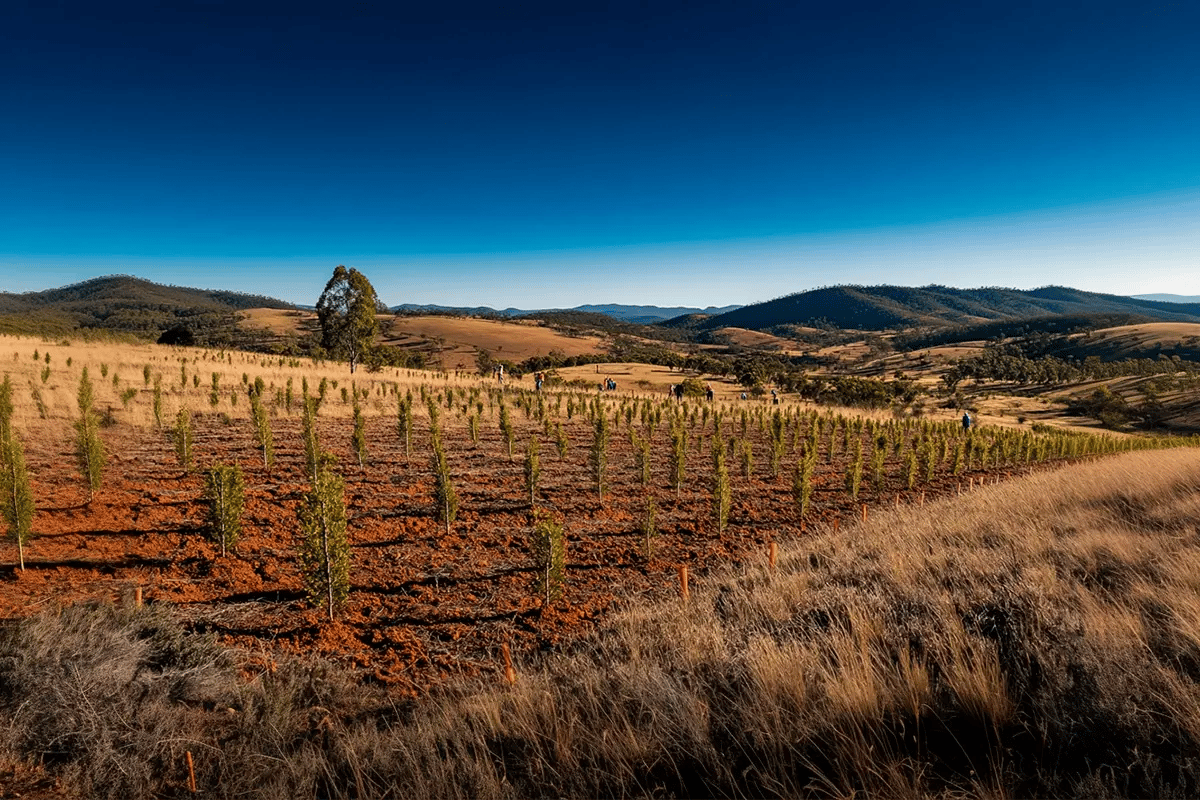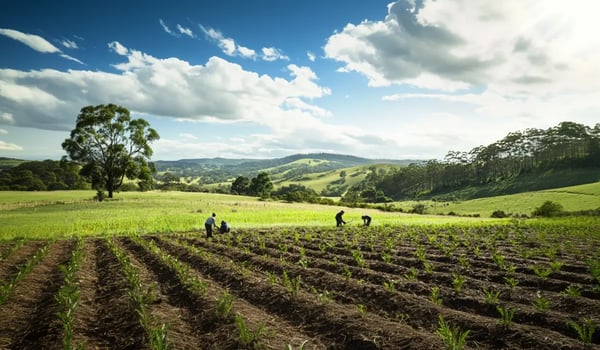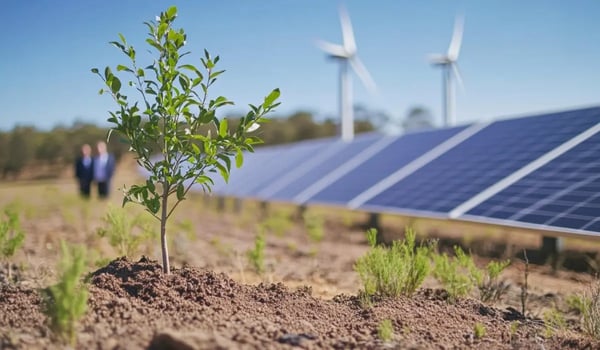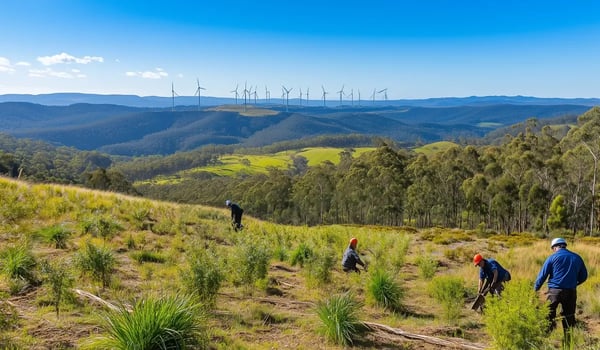Victoria, Australia, has launched a major funding programme to help landowners establish forestry...
Australia’s Largest Native Reforestation Drive Planned Under EP Credit Scheme
A record-setting reforestation initiative is taking shape in Australia, with 3,000 hectares of native trees slated for planting in 2025. The project will be the largest ever conducted under the Environmental Plantings (EP) method—a nature-based approach that generates Australian Carbon Credit Units (ACCUs) by replanting native vegetation on cleared land.
 Reforestation project on 3,000 hectares in Australia with native species planting. AI generated picture.
Reforestation project on 3,000 hectares in Australia with native species planting. AI generated picture.
‘This is the biggest scale of planting ever attempted in the country under the EP method,’ said Cuong Tran, Chief Executive of land restoration company Covalent Land, in comments to Quantum.
Covalent is currently overseeing 12 active EP projects, typically covering between 400 and 500 hectares each. Its client base ranges from institutional investors like Silva Capital to major emitters such as Woodside Energy, as well as several private family offices.
In Queensland, Covalent recently wrapped up a 400-hectare planting operation involving around 160,000 trees for Silva Capital. That effort is part of a broader target to restore 7,000 hectares over five years—equivalent to roughly 3 million trees.
The next phase will kick off on a 590-hectare plot between May and June, depending on seasonal rainfall. Tran noted that ‘everyone’s chasing the EP credit because of the quality and the integrity,’ but added that the tight planting windows—limited to just a few months each year—create logistical pressure. ‘You’ve only got two months out of every 12 to really do the work and meet the conditions and make sure that the trees have the best chances of survival.’
Planting seasons on Australia’s east coast typically fall between March–May and August–September. Developers are already moving fast to take advantage of favourable rain conditions in New South Wales.
Ensuring long-term tree survival will involve everything from weed control and drought mitigation to keeping wallabies at bay. Infill planting—replacing trees lost in previous cycles—is also expected to ramp up this season.
Interest in EP projects has surged, especially following the phase-out of older methods like Human-Induced Regeneration and avoided deforestation. Registrations for EP initiatives rose to 86 in 2024, up from just 11 in 2021, according to the Clean Energy Regulator.
The carbon market is responding. EP credits now fetch $32.55 (AUD 51) per tonne of CO2 equivalent—significantly higher than the $21 (AUD 34.75) price tag for Generic ACCUs. Despite their longer timelines and upfront costs, EP projects are gaining traction as a reliable, high-integrity path to carbon offsetting.






.webp?width=600&name=120525_Record-beaking%20forestry%20project%20signals%20carbon%20market%20momentum%20in%20Australia_featured%20image%20(1).webp)